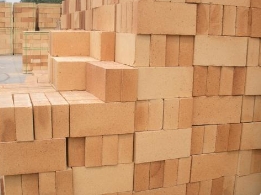- 14
- Oct
Measures to extend converter life
Measures to extend converter life
1. Change the masonry method and improve the process standard:
1.1 Under normal circumstances, wet brickwork will produce moisture, which is not conducive to constant temperature dehydration at 400°C. The converter masonry adopts the combination of dry masonry and wet masonry, that is, the upper and lower layers of the tuyere area and the furnace mouth area are wet masonry, and the rest are dry masonry.
1.2 The masonry of the tuyere bricks was changed from one end to the middle to the two ends to avoid the triangular joints and dislocation of the tuyere composite bricks.
1.3 The inverted arch bricks for the upper and lower furnace mouths are laid symmetrically from one end to the two ends from the center to the two ends to facilitate the locking of the two sides and prevent the two bricks from falling off due to uneven and imperfect gaps.
1.4 The distribution of brick joints is full, uniform, consistent inside and outside, and expansion joints should meet the requirements of 2-3mm. The joints of the brick bodies at all parts should be locked. The processed brick body shall not exceed one-third, and the processed brick body shall not be less than two-thirds of its own.
1.5 mg filler should be rubbed and scattered by hand when falling from a height of one meter. The thickness and firmness of the filler should be uniform.
1.6 Do not use damaged, cornered and wet chrome-magnesium bricks.
2. Control converter cold material to prevent high temperature corrosion
The test shows that when the chrome-magnesia brick has thermal shock resistance at 850℃, it will break 18 times, which will cause damage to the furnace lining. Therefore, it is necessary to avoid furnace temperature fluctuations, reduce and eliminate thermal stress damage to the furnace lining. In production, the furnace temperature is stabilized by controlling the amount of cold charging.
3. Reasonably control the silicon content of converter slag to reduce chemical corrosion
Neutral or weakly alkaline slag can protect the furnace lining. Olivine magnesia has a serious corrosive effect. It can not only dissolve the surface of magnesia refractories, but also can penetrate into the interior of magnesia refractories to dissolve.
The higher the temperature, the greater the solubility of MgO in converter slag, and the formation of forsterite with a lower softening temperature under high temperature load, which reduces the performance of magnesia bricks. Iron oxide can also saturate periclase and chromite particles, causing particle damage and rapid damage to magnesia bricks. The silicon content of the converter slag is less than 18%, which is alkaline, and the silicon content of the converter slag is more than 28%, which is acidic. The silicon content in the converter slag is between 19% and 24%, which is neutral or weakly alkaline, and has no corrosiveness to the magnesia brick lining. Strictly control the silicon content of converter slag during production to stabilize it between 19% and 24%.
4. Improve the quality of personnel
Improve the quality and ability of furnace manufacturing, converter operation and production management personnel to ensure furnace manufacturing quality.
Improve emergency response capabilities, scientific and strict production supervision and management.
5. Reasonable selection of air supply intensity and oxygen concentration
In the production process, the mismatch between the furnace body and the fan is inevitable. It is strictly forbidden to use a fan to supply air to the small furnace body to prevent serious erosion and serious melt blown in the tuyere area. The oxygen enrichment concentration of the converter should not be higher than 27%, the oxygen concentration should be higher than 27%, and the brick lining should be washed more.

